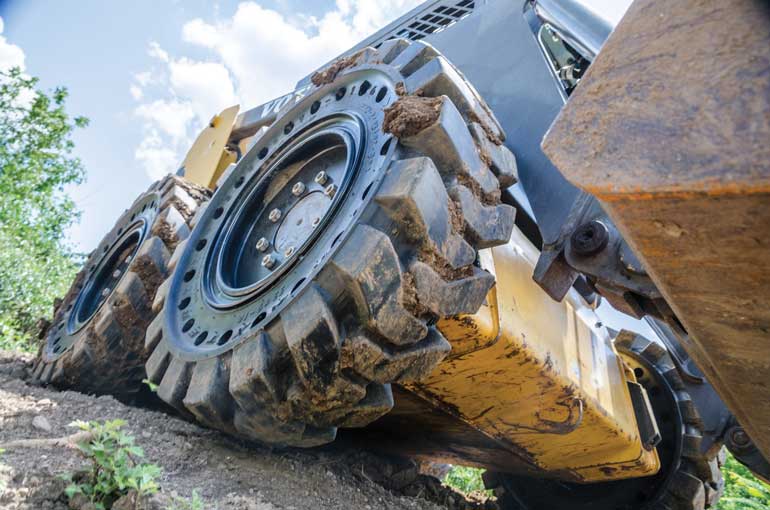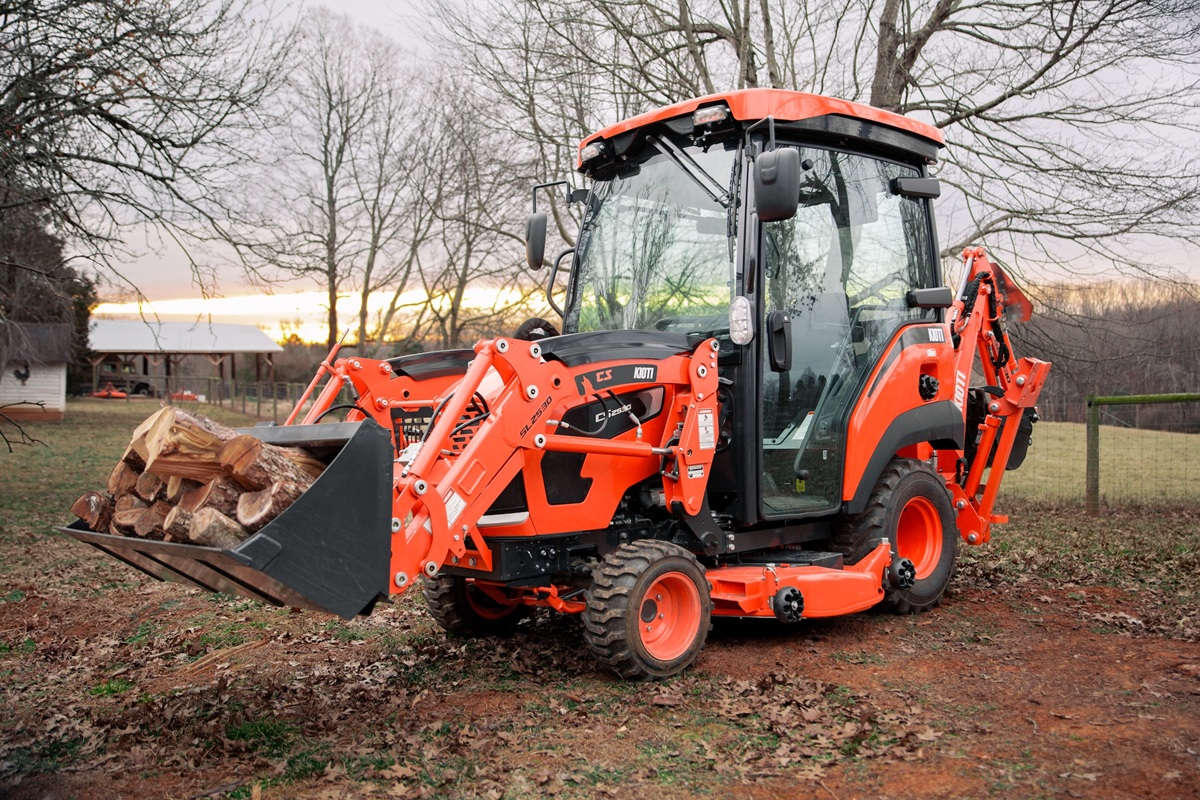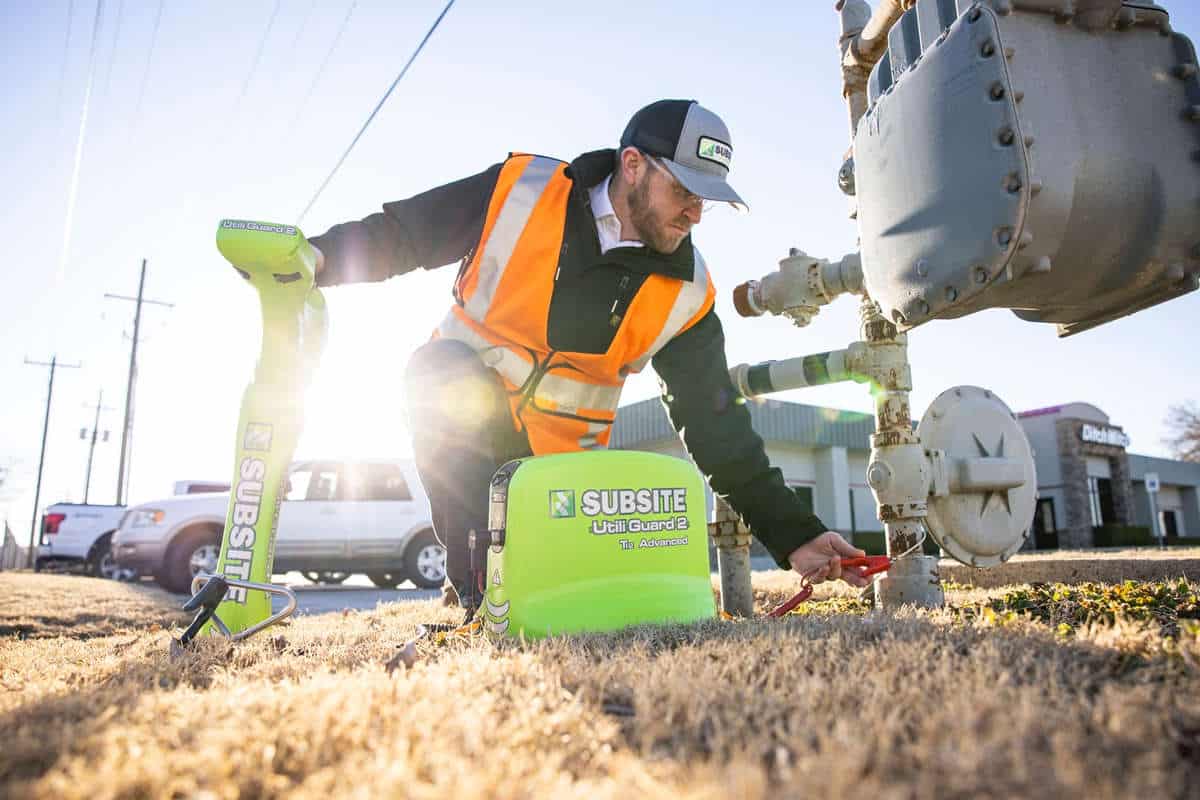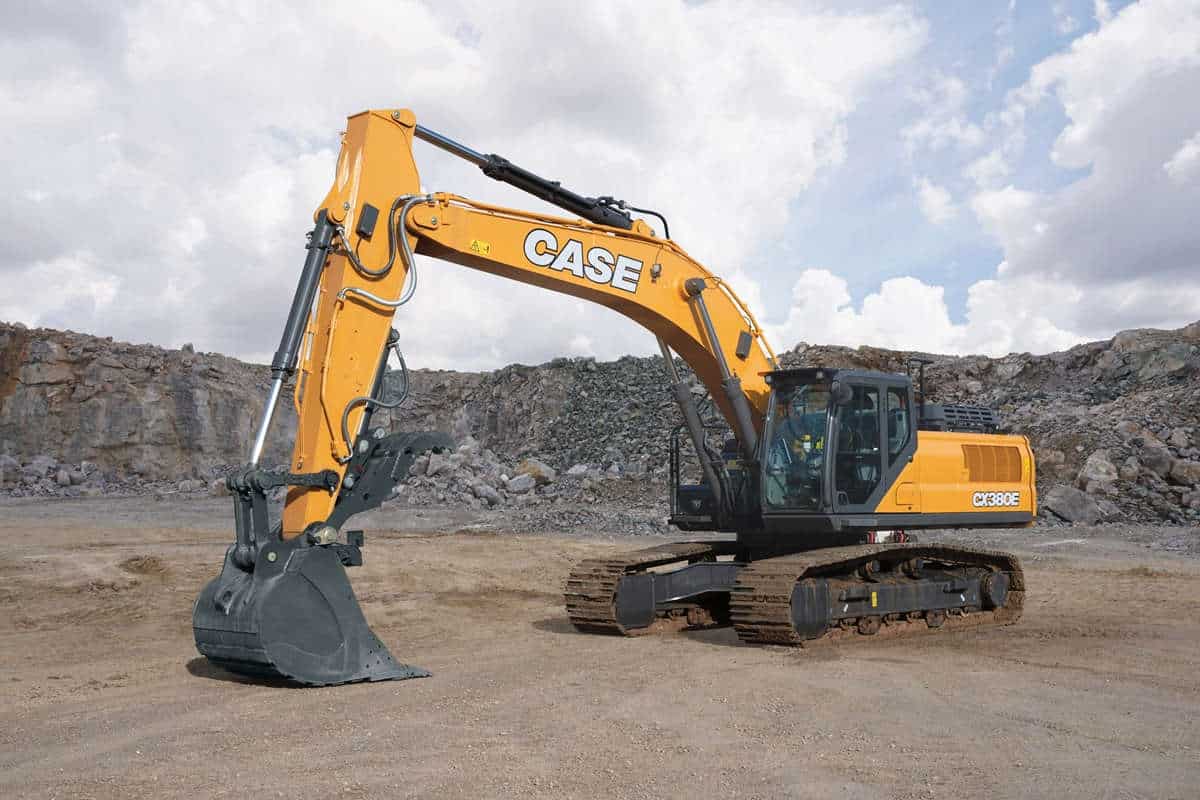Is Your Skid Steer Loader Wearing the Right Tires?
How does jogging five miles in a pair of steel-toe work boots sound to you? Climbing a rugged mountain in bedroom slippers? Ripping up your kitchen floor because you’re wearing baseball spikes?
Sounds ridiculous, doesn’t it? Well, if your skid steer loader is equipped with the wrong tires for your applications, the results can reduce your productivity and damage work surfaces, too.
Let’s look at the range of available tire options and how making the best choice for your most common applications can increase the performance of your loader, tire life and even operator comfort — while protecting turf, soil, etc. (where applicable).
Learn the Lingo
When considering different types of tires available for skid steer loaders, it’s important to understand a few common tire terms.
- Tread patterns
There are four tire patterns used for construction applications: diamond lugs for hard surfaces, swept lugs for dirt, button lugs for more flotation on turf and smooth tires for specialty applications on hard surfaces. - Tread depth
This refers to how deep the grooves are between lugs. For most applications, the tire standard depth of 0.75 in. is fine. However, in rocky ground conditions, a deeper depth may last longer. - Ply rating
This measurement helps identify how much load the tire is designed to carry at its industry-specified pressure.
Common OE Tires
Most skid steer loaders come from the manufacturer with what’s called an R4 tire, which has an aggressive swept lug tire pattern designed for a dirt environment. With large voids between lugs and a directional pattern, R4 tires provide great traction for pushing or doing finish grade work. While that tread pattern works great in the dirt, it will chew up turf and wear more quickly (because the pattern’s deep voids result in less surface area) on hard surfaces than other patterns.

When talking to a tire representative, be prepared with a checklist of the kind of work you’re doing, surfaces involved, tools you use, weight of materials transported, etc.
Is the R4 Tire Right for Your Applications?
Every contractor’s needs are different, so don’t just blindly accept and go off and running (like the jogging in work boots concept) with what came on your loader. No one tire pattern should be thought of as universally correct for all types of work. Instead, match your loader’s tires to your typical working environment. For example, if you’re hauling material across someone’s backyard one day and breaking concrete along the right-away the next, your machine will move across a variety of surfaces. Working in those environments, that skid steer loader should be outfitted with tires with patterns (e.g., button lugs or diamond lugs) that have less voids between the tread blocks so more of the tire is touching the surface That type of design will help you reduce the ruts when transporting material over turf and wear better on hard surfaces.
Consider Tire Quality, Too
Unlike the over-the-road tire industry, there are no regulations for construction tires, so two different brands of tires may look the same and have similar specs, but vary greatly in the way they handle and how long they last. Seek out a recommendation from a tire expert who will consider your specific range of applications and help you determine the best tire solution.
As one of the largest online distributors of skid steer loader tires, the team at MWE cuts up every model of tire offered to customers in order to know how each tire is constructed and explain it to you. This is important because there are a lot of inferior imported tire models flooding the market right now. They will look the same as OEM tires but have significantly shorter lifespans and performance issues, like swaying and bouncing while under a heavy load.
When talking with an MWE representative, you’ll learn additional considerations, beyond tire patterns, that determine quality and long wear for more return on your tire investment.
- Bead size
The tire bead is the edge of the tire that sits on the wheel. It is a rubber-coated steel cable whose function is to ensure that the tire remains attached to the wheel rim. Wheels for your skid steer are made with a small slot or groove for the tire bead to sit in. When the tire is properly inflated, the air pressure within the tire keeps the bead in this groove. It’s important that the bead of a pneumatic skid steer tire be large, strong and durable because the stronger the bead, the better it will keep your tire sealed. The better your tire is sealed, the less likely it is to lose air and suffer damage. - Center thickness
A tire’s body is comprised of several layers or plies. The thickness and quality of plies may differ between manufacturers. It’s important that your skid steer tire have a greater body, “center thickness,” to help prevent puncture damage and increase your tire’s lifespan. - Sidewall thickness
Besides providing lateral stability, the tire sidewall prevents air from escaping and keeps the body plies protected. It’s important that the sidewall of a pneumatic skid steer tire be thick and durable because the thicker the sidewall, the more likely it is to resist damage from stress and gouging.
Take Advantage of Tire Experts’ Knowledge
Any good skid steer loader tire representative you call is going to first want to know what your needs are. So be prepared with a checklist of the kind of work you’re doing, surfaces involved, tools you use, weight of materials transported, etc.
Tell them your tire budget and what kind of lifespan you want from your tires. Discuss tire problems you’re currently having or had in the past. Ask questions. Then consider their range of recommendations. Most representatives should be able to give you good, better and best options from their skid steer loader tire lineup.
Choose Wisely
There are hundreds of skid steer loader tire options to choose from, and a set well-matched to your work will increase your jobsite efficiency, reduce surface damage caused by the machine and last longer — and even give you a smoother ride over the long hours of your work day. So, work with a tire professional and put your best foot forward with the right skid steer loader “shoes” for your specific applications.
Eric Hartzler is a wholesale manager at MWE.
Learn more about tires for construction equipment here. Tags: June 2017 Print Issue, Skid Steers





